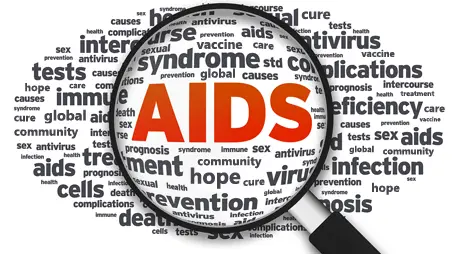Share on Social Media:
The Top 5 Countries with The Highest HIV AIDS Prevalence Rates
| Country | HIV Prevalence 2012 | HIV Prevalence 2001 | |
|---|---|---|---|
| 1 | Swaziland | 26.5% | 24.8% |
| 2 | Lesotho | 23.1% | 23.4% |
| 3 | Botswana | 23.0% | 28.1% |
| 4 | South Africa | 17.9% | 15.3% |
| 5 | Zimbabwe | 14.7% | 24.3% |
 Special Report
Special Report
- In 2008 some 1,200 children were infected with HIV every day. 2,500 young people (15-24) and 3,700 adults over 25 years of age were infected with the HIV virus every single day of the year. That translated to 430,000 children, 920,000 young people and 1,340,000 adults infected yearly. However the global percentage of adults living with HIV has leveled off since 2000.
- In 2008 there were 2,100,000 children, 5,000,000 young people and 26,300,000 adults living with HIV across the globe. The vast majority of these people live in Sun Saharan Africa (about 22 million). Sub-Saharan Africa remains the region most heavily affected by HIV, accounting for 67% of all people living with HIV and for 75% of AIDS deaths in 2007. However, some of the most worrisome increases in new infections are now occurring in populous countries in other regions, such as Indonesia, the Russian Federation, and various high-income countries.
- The estimated spending for HIV/AIDS prevention, care and support in low and middle income countries (public and private sources) was 10 billion dollars which includes domestic (government) spending, estimated out-of-pocket spending by directly affected individuals and their families, and funding from bilateral donors, multilateral agencies, and the private sectors (for the year 2007).
- There were 1.1 million people living with AIDS in the United States in 2006. In the same year there were 56,300 new infections. 49% of these new infection were African American which represented 12% of the U.S. population. 30% of whites were infected and 19% of Latinos which represented 66% and 15% of the U.S. population respectively.
- HIV, or the Human immunodeficiency virus, is the virus that causes AIDS. HIV can be transmitted through infected blood, semen, vaginal secretions, breast milk, and during pregnancy or delivery. HIV destroys certain white blood cells called CD4+ T cells. These cells are critical to the normal function of the human immune system, which defends the body against illness. When HIV weakens the immune system, a person is more susceptible to developing a variety of cancers and becoming infected with viruses, bacteria and parasites. The disease has four stages: primary or acute HIV infection, asymptomatic, symptomatic, and advanced HIV disease or AIDS.
Tags:
Health Statistics, Top 5 Highest, AIDS & HIV Statistics
Sources: UNAIDS Global Report 2013.
List Notes: Data is percentage of adult people (ages 15-49) estimated to be living with HIV, at any disease stage, including AIDS.
Sources: UNAIDS Global Report 2013.
List Notes: Data is percentage of adult people (ages 15-49) estimated to be living with HIV, at any disease stage, including AIDS.

